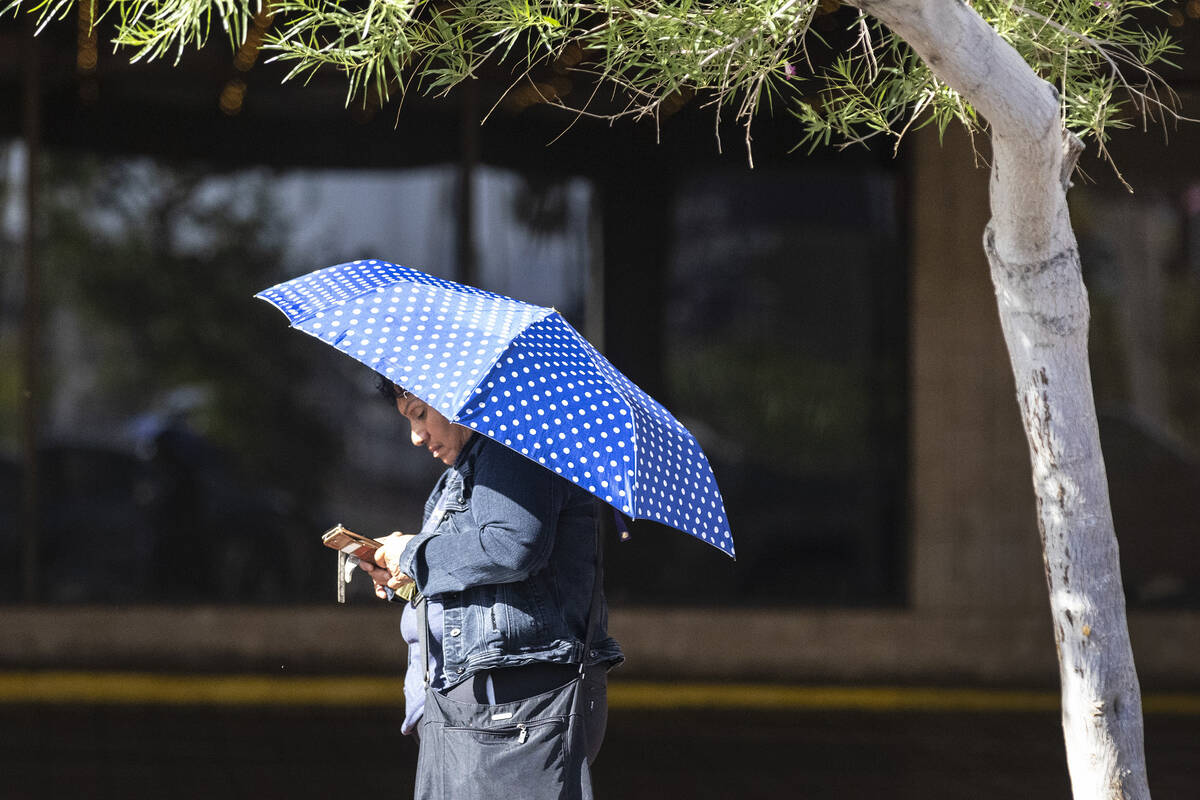Going outside? How to prevent heat stroke during dog days of summer

Medical experts say there are several warning symptoms that Las Vegas Valley residents should learn to spot to prevent heatstroke and to help those who may be experiencing heat-related illnesses.
“These warnings are not to be messed around with,” said Jeff Quinn, public health preparedness manager with the Southern Nevada Health District. “An extreme heat watch is something for people to be aware of.”
Triple-digit temperatures create a perfect environment for heat-related illnesses like heat cramps and exhaustion, according to Dr. Elissa Palmer, chair of the Department of Family and Community Medicine for the UNLV Kirk Kerkorian School of Medicine. But these are just warnings from the body that the illness could progress to heatstroke.
Palmer suggested taking a friend or family member along when heading outside in summer heat.
Signs of heat-related illnesses
Heat cramps occur when one does excessive exercise in the heat that results in a muscle spasm or pain. When this happens, Palmer recommends going to a shaded area and sipping a cold water or a sports drink.
Heat exhaustion happens as a response to the body losing a lot of water and salt through sweating. People appear pale and have cold and clammy skin, according to Palmer. They usually have a fast pulse, feel nauseous, and are dizzy.
Palmer recommends moving to a cool place where you can sit or lie down, then loosening your clothes, wetting your clothes and sipping water or a sports drink. But if symptoms keep getting worse, like vomiting, seek medical attention, as it could be progressing to heatstroke.
Heatstroke is the most serious heat-related illness. This occurs when the body has depleted itself of water and salts to the point that it can no longer cool down through sweating. According to Palmer, the skin will be hot and red, and the person will have a rapid heart rate. The person is usually confused, if not already unconscious.
“Call 911 right away,” Palmer said, and follow the same procedure as for heat exhaustion. Since the body cannot cool itself, wet the person’s clothing with cold water until medical assistance can arrive.
Plan ahead
The hottest part of the day is from 3 p.m. to 6 p.m., when outdoor events and activities should be minimized, according to Quinn, who said heat-related deaths are preventable.
“People don’t start to think about (hydration) until it’s too late and experience negative signs of heat exhaustion or stroke,” Quinn said. “It’s good to hydrate the day before and stay hydrated throughout the day.”
During excessive heat, locals should plan to stay inside between 10 a.m. and 5 p.m., Quinn said. He suggested stocking up on necessities such as food and water to limit the amount of trips throughout the day.
Energy usage is high during the summer, so households should plan for power outages. Health professionals recommend leaving the house for a cooler location during an outage, even if there are fans in the home. This could be a library, mall or movie theater.
Quinn also recommended that residents call their car insurance providers to see what kind of roadside assistance they have in case they become stranded. For this scenario, it’s good to pack a cooler with water and snacks, as well as a towel to lay on the asphalt if you need to kneel or lie on the hot ground.
If possible, go to a nearby gas station, but don’t stay in the car, Quinn said.
Contact Jimmy Romo at jromo@reviewjournal.com or call 702-383-0350. Follow @jimi_writes on Twitter.